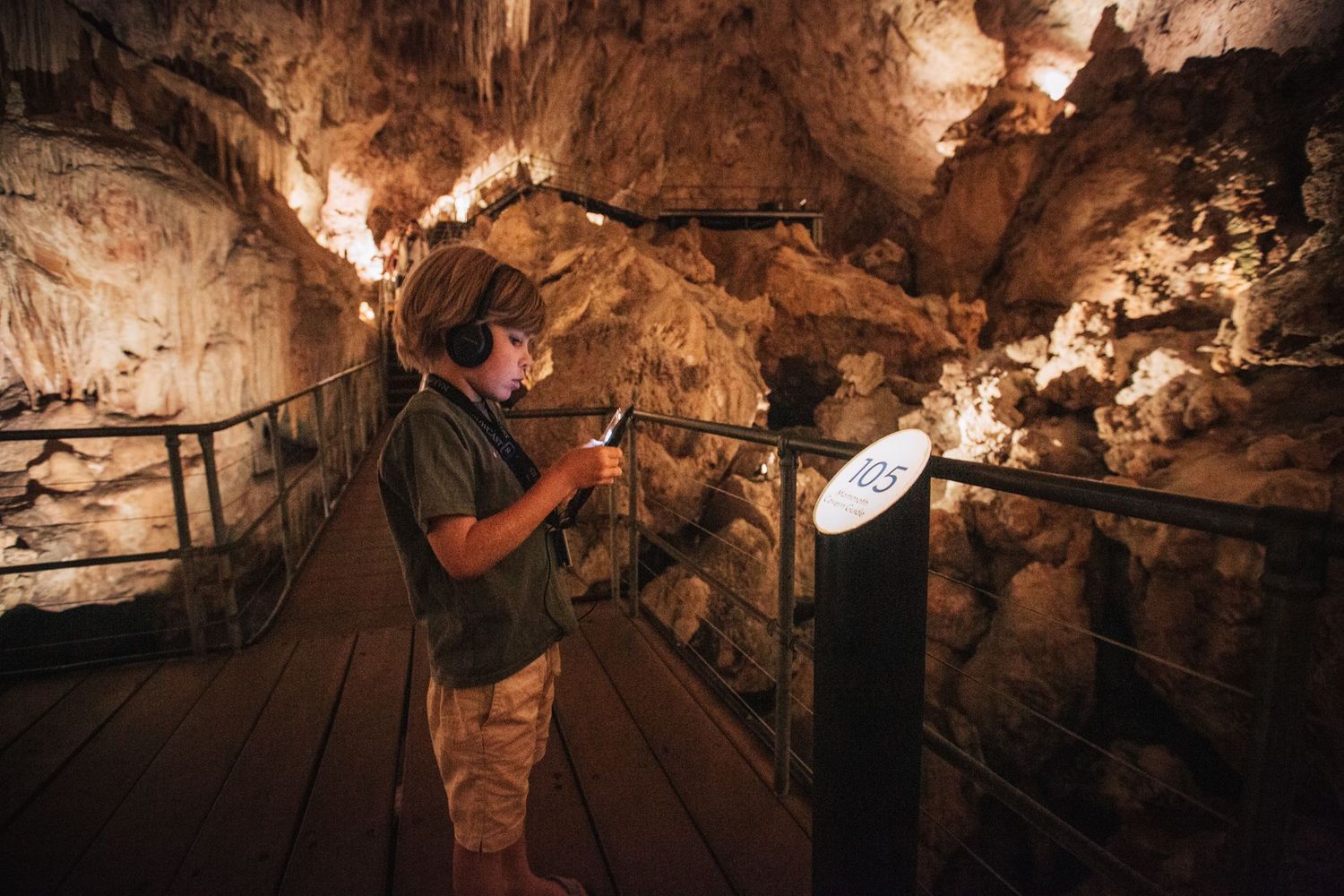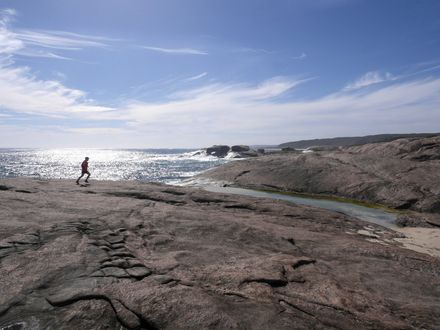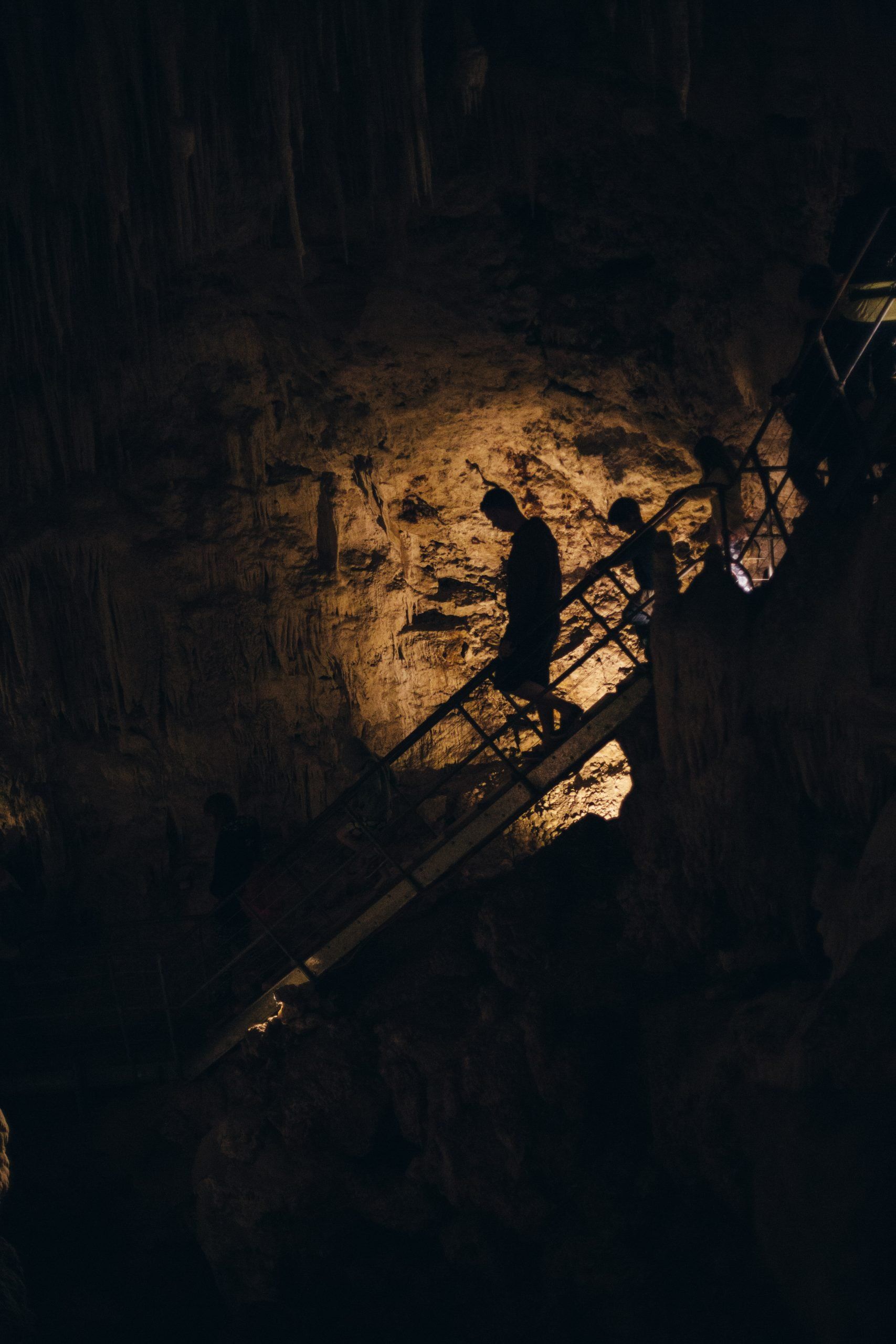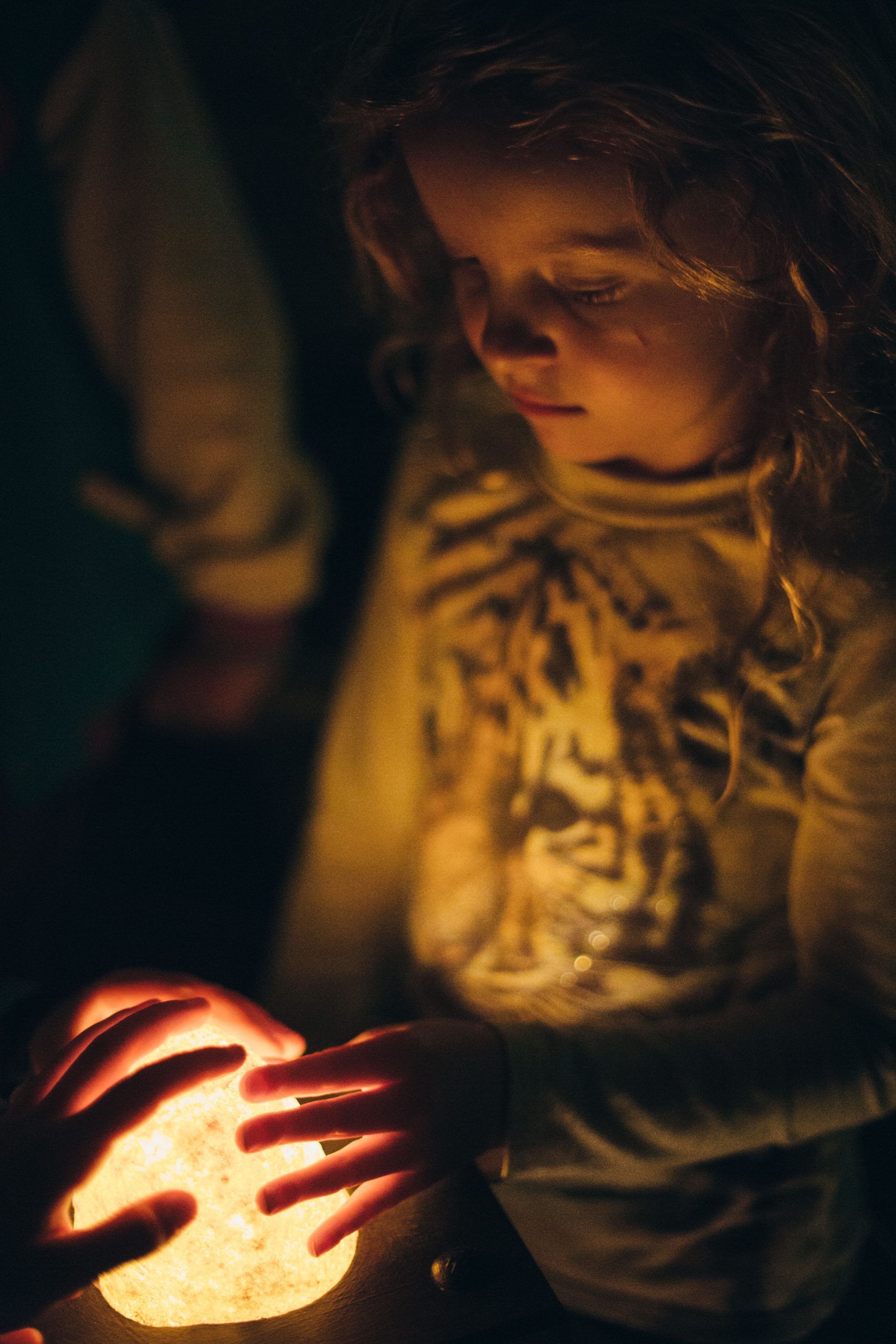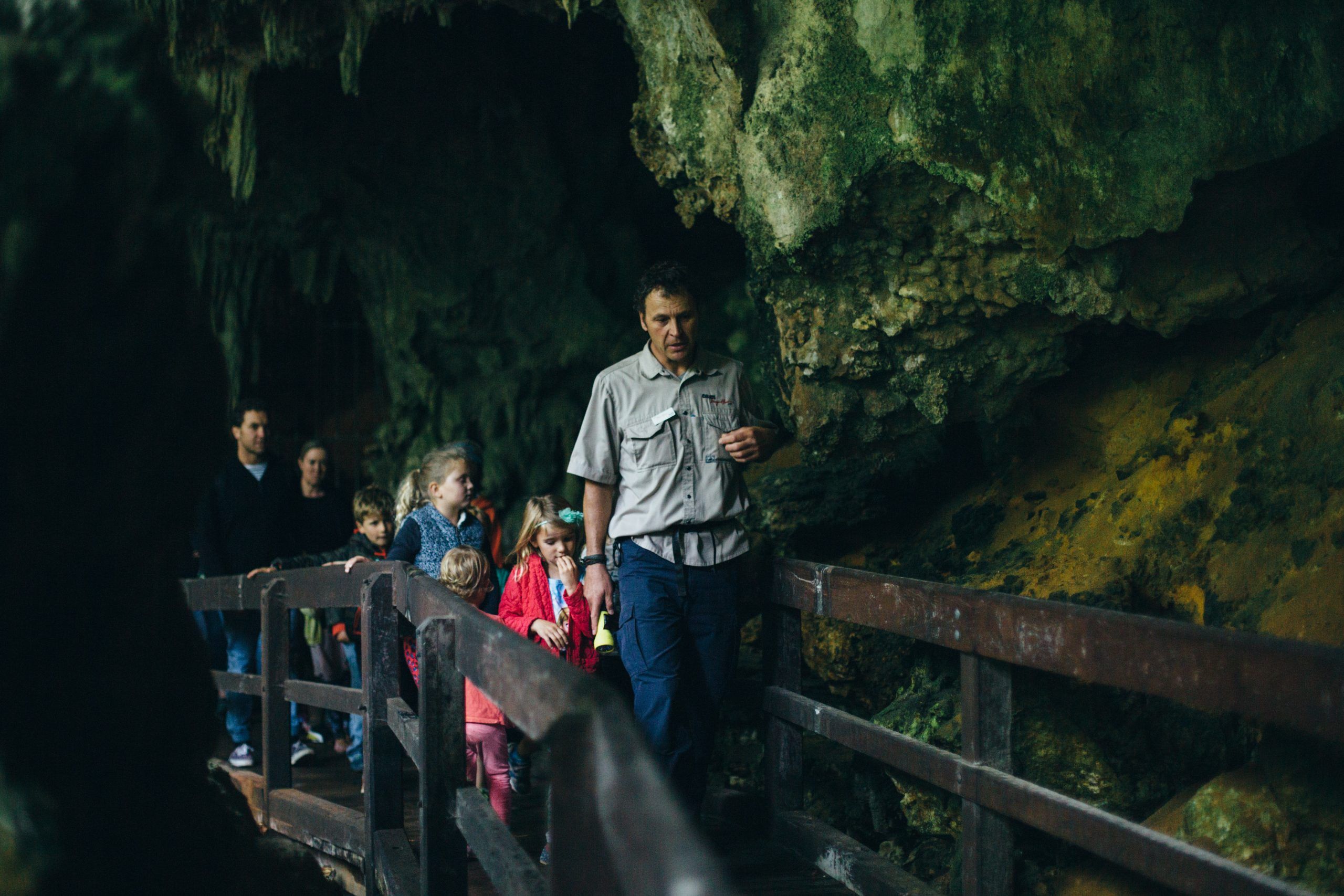Hidden beneath the blazing tarmac of Caves Road, below the karri and marri forests, and under the undulating Leeuwin-Naturaliste Ridge, lies a winding labyrinth of underground tunnels and echoing caverns. It’s a magical world for children to visit over the school holidays, and a treasure trove of geological gems for accompanying mums and dads.
You might be asking which cave to visit over the Easter break. A fair question, as they are all such unique experiences, but when travelling with kids, it’s great to start with Mammoth and Ngilgi. Younger kids and teens will love Mammoth Cave, where they can explore the chambers at their own pace with an audio headset acting as an on-demand guide. Mammoth Cave is also the most accessible of the caves for parents with little ones in tow. Kids will love searching for the fossilised jawbone of the Zygomaturas Trilobus (a snouted marsupial the size of a cow that lived around 50,000 years ago!)
Ngilgi Cave is an educational and physically challenging experience for school aged children, and definitely worth exploring. A guide will take you on the initial walk into the cave, then leave you to to discover the fairy tale formations at your own pace. Kids will love the ‘tunnel of doom’ – a special secret passage for little explorers.
